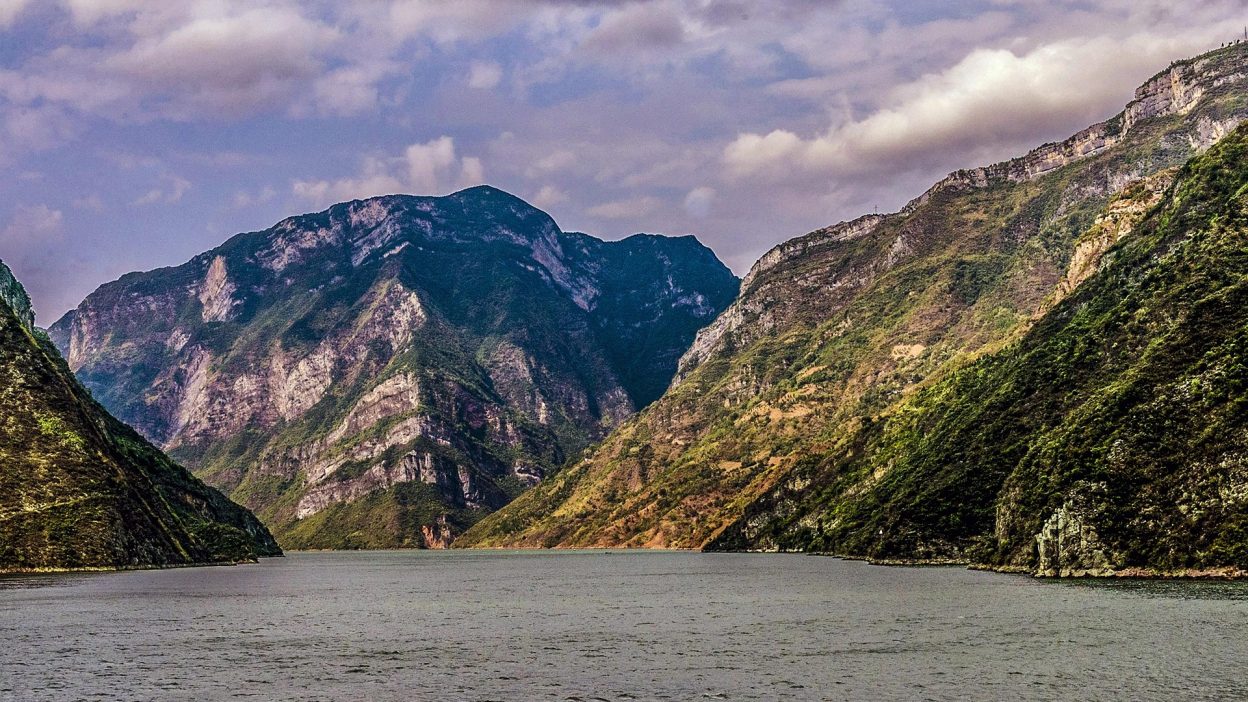The Catastrophe That Exposed China’s Vulnerabilities And Redefined Disaster Preparedness
The 1954 Yangtze Flood remains one of the most catastrophic natural disasters in modern Chinese history. The flood, which submerged a significant portion of the Yangtze River Basin, affected millions of lives, causing widespread destruction across cities and rural regions. The extent of human suffering and material loss from the disaster was immense, with repercussions lasting for years to come. This devastating event revealed the vulnerability of China, highlighting the urgent need for better preparedness and flood control measures.
Beyond the immediate destruction, the floods caused severe long-term challenges. Entire agricultural areas were inundated, resulting in a profound food shortage. The consequences of the disaster went far beyond what was visible in the aftermath, affecting the social, economic, and political landscape of the nation for decades.
How the 1954 Yangtze Flood Exposed China’s Weaknesses in Handling Natural Disasters
The 1954 floods showed just how unprepared China was for such a large-scale natural disaster. Despite having a large population and growing infrastructure, many of the affected areas were not equipped to handle the flood’s immense power. The Yangtze River, one of the longest rivers in the world, overwhelmed its banks, submerging not just rural farmlands but also major urban areas, exposing serious gaps in China’s flood management systems at the time.
This devastating event forced the Chinese authorities to recognise their vulnerability and spurred the country into action. In the years that followed, China began making sweeping changes to its flood management strategies and invested heavily in the development of better infrastructure and early-warning systems to mitigate the risks of future flooding.
The Human Cost of the 1954 Yangtze Floods: Fatalities, Injuries, and Shocking Statistics
- Loss of Life
The 1954 Yangtze Flood claimed over 33,000 lives. The majority of these fatalities resulted from drowning, disease outbreaks, and the collapse of buildings. The death toll was disproportionately high among the poorer communities, who had the least access to protection or evacuation resources. - Injuries and Forced Displacement
In addition to the lives lost, over 100,000 people suffered injuries. Homes were destroyed, and entire families were left homeless. Millions of people were forced to flee their homes, leading to overcrowded conditions in neighbouring areas that were already under strain from the crisis. - Economic Devastation
The economic impact of the 1954 floods was profound. Agricultural crops were destroyed, critical infrastructure was damaged, and industrial activity was brought to a standstill. The economic loss ran into billions, and the country struggled to recover from the long-term financial effects of the disaster. Food shortages became a pressing issue, while efforts to rebuild the affected areas further strained national resources.
Could the 1954 Yangtze Flood Have Been Prevented? Examining the Missed Opportunities
The 1954 Yangtze Flood raised significant questions about whether the disaster could have been prevented. While it’s impossible to completely predict or control natural events of this scale, several factors exacerbated the impact. Inadequate flood defences, lack of early warning systems, and slow governmental responses contributed significantly to the scale of the destruction.
The lack of sufficient infrastructure, such as dykes and embankments, left many regions exposed to the floodwaters. Furthermore, the failure to evacuate vulnerable populations in a timely manner allowed the flood to cause even more destruction than might have otherwise been possible.
Rebuilding China After the 1954 Yangtze Flood: Recovery and Reconstruction Efforts
Following the devastating 1954 floods, China launched one of its largest recovery and reconstruction efforts in history. Entire cities, villages, and towns needed to be rebuilt from the ground up. The process not only involved restoring homes and infrastructure but also addressing the social and psychological toll on survivors. The country worked to restore essential services and provide support to those who had been displaced.
In the years following the disaster, the Chinese government prioritised the construction of advanced flood control systems and the rehabilitation of the damaged infrastructure. These initiatives were crucial in preventing further tragedies and allowing the country to rebuild its economy and its population’s sense of security.
China’s Renewed Focus on Flood Management Post-1954 Yangtze Flood: Key Developments
The flood of 1954 marked a turning point in China’s approach to managing flood risks. In the wake of such a devastating event, the government recognised the urgent need to improve the country’s flood control systems. Efforts focused on building new dams and improving flood defences to control the flow of the Yangtze River and mitigate the risk of future flooding.
Significant investments were also made in the development of advanced forecasting and early-warning systems to help prevent a disaster of this magnitude in the future. These efforts led to the construction of some of the world’s largest hydropower projects, such as the Three Gorges Dam, which became central to flood management in China.
The Role of Weather Forecasting in the 1954 Yangtze Flood: Shortcomings and Delays
- Inaccurate Forecasting
Before the 1954 flood, the ability to predict the weather was limited, and forecasts were often inaccurate. Though heavy rains had been predicted, the full extent of the flood was not anticipated, and many regions were caught unprepared. - Technological Limitations
The technological tools available for weather prediction were rudimentary at the time. Without access to modern satellite technology or advanced meteorological systems, the Chinese government struggled to obtain precise information, which hindered their ability to provide timely warnings. - Slow Response to Early Warnings
Even as floodwaters began to rise, local authorities were slow to respond, and many areas were not evacuated in time. The lack of coordination and delayed response contributed to the widespread devastation caused by the flood.
The Long-Term Impact of the 1954 Yangtze Flood on China’s Disaster Preparedness
The aftermath of the 1954 Yangtze Flood profoundly changed how China approached disaster preparedness and response. The devastating effects of the flood highlighted the need for a more proactive and coordinated approach to dealing with natural disasters. In response, the government established new disaster management policies, including stricter building codes and enhanced flood control measures.
Additionally, the Chinese public became more aware of the potential risks posed by natural disasters, leading to greater emphasis on disaster education and public preparedness. The events of 1954 acted as a catalyst for the changes that transformed China’s disaster response strategies in the years that followed.
Conclusion: The 1954 Yangtze Flood – A Tragedy with Lessons for the Future
The 1954 Yangtze Flood remains a pivotal moment in Chinese history, representing the massive human, economic, and environmental toll of unchecked natural disasters. While recovery efforts have led to the development of more resilient infrastructure, the tragic loss of life and the destruction caused by this event continue to resonate.
As we reflect on the impact of the Yangtze Flood, we must also recognise the tremendous resilience shown by the people of China in the face of such overwhelming adversity. This disaster serves as a stark reminder of the power of nature and the critical importance of preparing for the worst.
5 Short FAQs:
- How many people died during the 1954 Yangtze Flood?
The flood led to the loss of over 33,000 lives due to drowning, disease, and structural collapses. - What caused the 1954 Yangtze Flood?
The flood was caused by heavy rainfall, snowmelt, and insufficient flood defences, exacerbating the crisis. - What was the economic damage from the 1954 Yangtze Flood?
The flood caused billions in losses, with widespread crop destruction and the collapse of critical infrastructure. - How did China respond to the 1954 Yangtze Flood?
China focused on rebuilding infrastructure, constructing dams, and improving flood management to prevent future disasters. - Why is the 1954 Yangtze Flood historically significant?
It was one of China’s most devastating floods, leading to major changes in disaster management and flood control policies.
References:
“1954 Yangtze floods”
“Yangtze River floods”
“Characteristics and Cause Analysis of the 1954 Yangtze River Flood Disaster”




